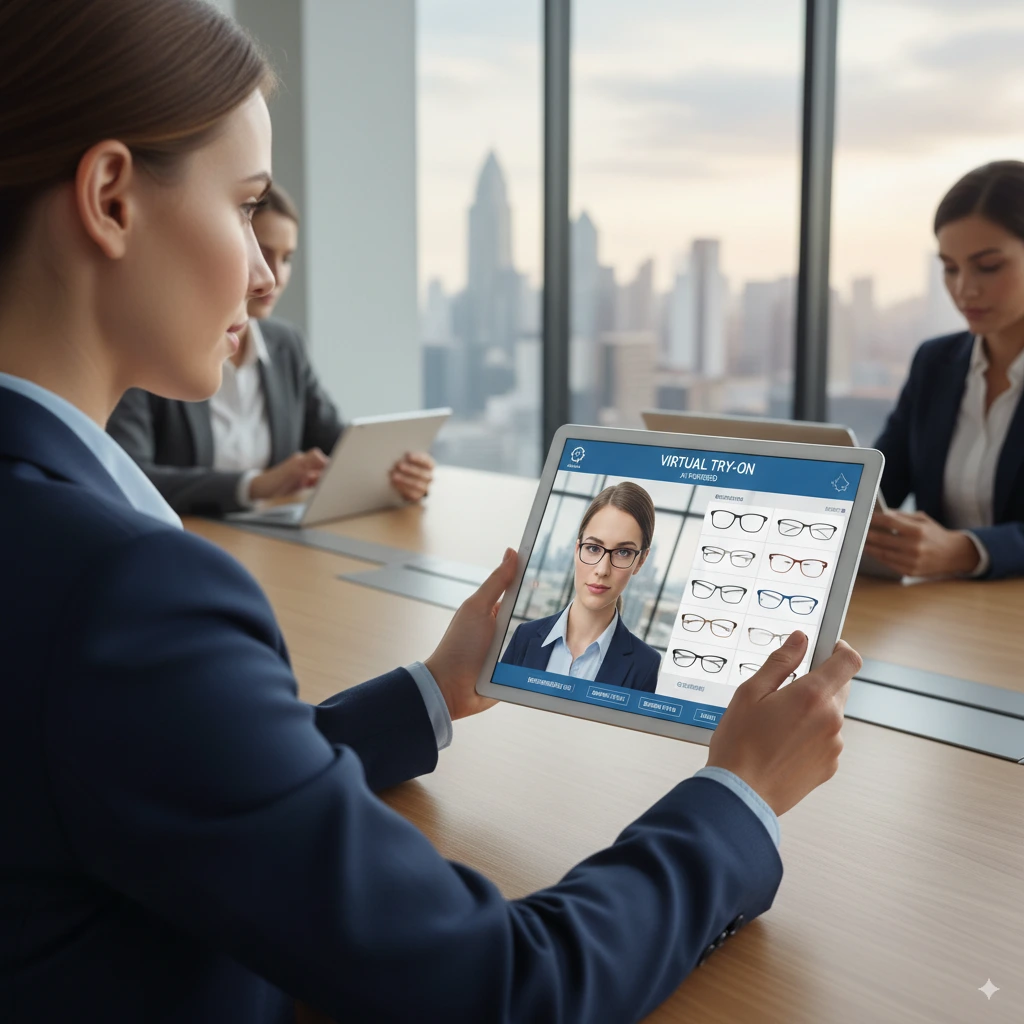How Virtual Glasses Try-On Technology is Reshaping the Eyewear Industry
Buying the right pair of glasses mixes style, comfort, and confidence. Store visits once meant trying many frames and guessing from a mirror. Now the technology of virtual glasses try on lets you preview frames on your face at home. The experience is quick, visual, and simple to use.
What it is and why it matters?
At its core, this technology supports virtual eyeglass fitting which basically means rendering a digital frame over your live camera feed. You can try on glasses virtually, switch styles in seconds, and see size and color against your facial features. This shortlists options before any store visit and helps buyers make steady, informed choices.
How does virtual try-on glasses software work?
1) Camera capture and facial understanding
The system streams video from your phone or laptop camera. Computer vision detects your face, then marks key points such as eyes, nose bridge, and ears. Many solutions also estimate a lightweight 3D face mesh and head pose. This allows stable placement as you turn, tilt, or move.
2) Scale and fit estimation
A realistic preview needs a correct scale. With that reference, the renderer sizes the frame, aligns the bridge to your nose, and positions the temples near your ears for a natural look.
3) Physically-based rendering
High-quality previews depend on good materials and lighting response. The engine uses physically-based shading so metals and lens tints look consistent under room lighting. Reflection, roughness, and color are tuned from the brand's 3D frame model for a closer real-world match.
4) Role of AR
Augmented reality keeps the 3D frame locked to your moving face. It stabilizes the model across frames, preserves proportions, and avoids jitter. Good AR also limits drift when you move closer to or farther from the camera, maintaining a steady, convincing overlay.
5) Role of AI
AI glasses try-on supports two key tasks.
- Fit guidance: Models infer face shape and estimate proportions that influence frame choice. With user consent, systems can learn preferences over time, nudging you toward styles that usually suit similar features.
- Smart retrieval: Frames and faces are embedded into vectors. The system quickly retrieves look-alike styles, colorways, or sizes when you like or save a frame.
Benefits of virtual glasses try on for buyers
Here are the practical benefits buyers experience when they try on glasses virtually.
- Convenience: You can try on glasses virtually anytime. No travel, no queues. Compare dozens of frames in minutes.
- Confidence: Realistic previews reduce uncertainty. You see shape, proportion, and color against your skin tone under normal room lighting.
- Broader choice: Filter by style, material, size, or brand. Save looks, share with friends, and come back later.
- Prescription and sunglasses: Preview tinted lenses, larger wraps, or classic rectangles before you buy prescription lenses or sun variants.
- Time and cost savings: Fewer store visits and faster decisions. Many users arrive at the store with a ready shortlist.
Points to consider and Current Limitations
While there are several advantages of virtual glasses try on technology but certain limitations are still present such as:
- Lighting and device quality: Poor light or low-resolution cameras can reduce realism. Natural, even light works best.
- Exact fit still needs validation: The preview is for style and size guidance. Final comfort, nose pad tuning, and temple adjustments remain in-store tasks.
- Catalog coverage varies: Not every retailer lists every frame with a 3D model. Selections differ by brand and region.
- Feel cannot be simulated: Weight, material texture, and pressure points require a physical try-on for final confirmation.
Virtual try on glasses gives a fast, clear way to judge style at home. While lighting, device quality, and catalog coverage still affect results, the everyday benefits are strong: convenience, confidence, and wider choice. KiXR also offers these features. Visit our website to know more.
Kavita has been adept at execution across start-ups since 2004. At KiKsAR Technologies, focusing on creating real life like shopping experiences for apparel and wearable accessories using AI, AR and 3D modeling


